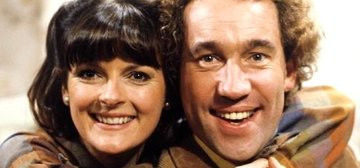
The District Nurse
1984 - United Kingdomengaging storytelling, moving, sometimes challenging, but mostly inspirational
In 1859, William Rathbone, a Liverpool merchant and philanthropist employed a nurse, Mary Robinson, to tend his wife at home as she began to succumb to her terminal illness. After his wife’s death, he retained Robinson’s services so that people in Liverpool, who could not afford to pay for nursing, would benefit from care in their own homes. Rathbone, together with Florence Nightingale, worked to try to develop the service. Rathbone set up and funded a nursing school in Liverpool specifically to train nurses for the city – and so organised district nursing began.
District nurses learned many things in their early training that hospital nurses did not. At a time when over 150 out of every baby born died, they studied how to feed and look after newborn babies, how to improve sanitation, teach health, air out rooms, provide water, plan meals and deal with infectious diseases. With a grant of £70,000 by Queen Victoria from the Women’s Jubilee Fund, the Queen’s Nursing Institute was founded in 1887.
Even with royal backing the training of district nurses was not easy to establish. It took a lot of time, trials and organisation. The district nursing movement in Victorian times also faced many arguments, which came from different views on social class and working women’s roles. This happened at the same time as medical science was making great progress and new ideas about women’s freedom to work for pay were emerging, albeit painfully slowly.
Before the National Health Service was created in 1948, patients were generally required to pay for their health care. Those who couldn’t afford doctor’s fees might turn to herbal medicine for a cure to their ailment. A lot of the time, they relied on the advice of other family members or neighbours, and a lot of that advice, passed down from generation to generation included a number of old wives’ tales that had no remedial effect whatsoever.

It’s into this scenario that a forward thinking district nurse by the name of Megan Roberts (Nerys Hughes) arrives in the poverty-stricken mining town of Pencwm in South Wales during the late 1920s. Eyed with suspicion by the local doctors who seem reluctant to help those who are unable to pay for their services and also by the local residents who would much rather use the ‘skills’ of local herbalist Nesta Mogg (Deborah Manship), Megan faces an uphill task to win over her community. Nevertheless, armed with her medical bag, her bicycle and a dogged determination to help people out – even if they don’t particularly want that help, Megan, in the face of prejudice and ignorance, gradually wins them over.
Created by Julia Smith and Tony Holland (who both went on to create EastEnders), The District Nurse enjoyed 3 seasons on BBC1 between 1984 and 1987. Nerys Hughes had previously been known for the comedy series The Liver Birds, but her role as Megan Roberts was perfectly pitched as the compassionate and highly skilled district nurse who becomes the anchor in a world of illness, fragility, and human frailty. Her presence in the community eventually transcends clinical boundaries, extending far beyond mere medical treatment.
What truly sets the series apart is its ability to capture the authenticity of district nursing. The portrayal of realistic medical scenarios is a testament to the meticulous research undertaken by the writers and producers. The show provides an accurate representation of the challenges faced by district nurses, such as resource constraints and the logistical difficulties of rural healthcare provision.

The series appeared to have ended in 1985, just as Smith and Holland’s new soap arrived as a permanent fixture on the BBC, but The District Nurse was revived two years later when we caught up with Megan Roberts in the mid-Wales seaside town of Glanmore. Renowned British character actor and a favourite Jackanory storyteller Freddie Jones worked alongside Megan as Dr. Emlyn Isaacs.
A number of scenes were filmed at Pont-y-Gof school in Ebbw Vale, shortly before the old school there was demolished. The children and teachers at the school were involved in the first two series. The outdoor school and street scenes were filmed at Troedrhiwgwair, a small village on the outskirts of Tredegar. Similarly, most of the houses used have since been demolished, however, the street remains.
With engaging storytelling, moving, sometimes challenging, but mostly inspirational drama, The District Nurse takes viewers on a journey into the untold stories of our unsung hero, who was representative of a body of remarkable healthcare professionals who still provide a vital service today.
Suggested Link: District Nurse Careers
Seen this show? How do you rate it?
Seen this show? How do you rate it?
Published on September 10th, 2023. Written by Marc Saul for Television Heaven.










